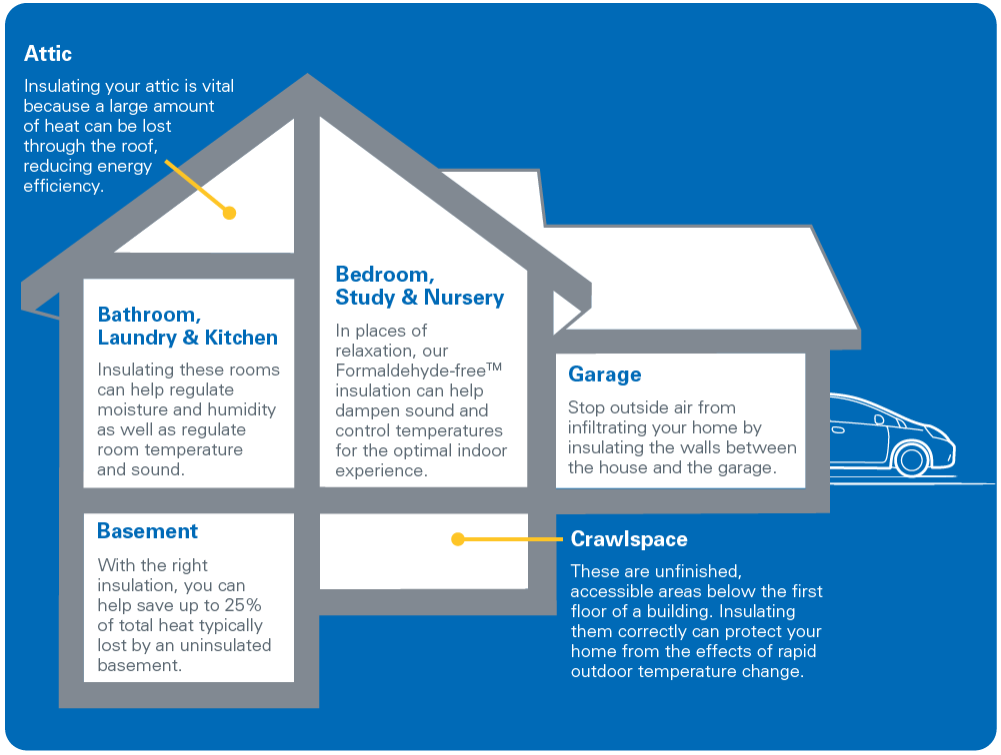Whether you're building a house, renovating an existing home or simply giving your insulation an upgrade, it's essential to know what to expect. Here are the three most important things that you need to keep in mind before insulating your home:
What type of insulation is best for your home?
It all comes down to something called "R-value"—this has to do with the insulation's ability to prevent heat from escaping. Depending on the weather where you live and the area of your house you are insulating, you may need insulation with a higher or lower R-value.
As a general rule of thumb, the higher an insulation's R-value, the greater the insulation power. With this in mind, if you live in an area that has extreme temperatures, hot or cold, a higher R-value will be needed to help maintain your home's energy efficiency and comfort.
You can check the appropriate R-value for your home based on where you live online.
How do you choose the right insulation for your home?
There are essentially three different types of insulation that you can choose from to insulate your house, each with their own benefits depending on the area of the house you’re using it in.
Loose-fill, also referred to as blow-in insulation, offers excellent thermal control. This is installed with a portable blowing machine and is perfect for covering hard-to-reach areas, typically attics. Blow-in insulation is easy to install in spaces of all shapes and sizes and doesn't require fitting or cutting. This type of fiberglass insulation also reduces sound transmission and is resilient to rotting, mildew and deterioration.
Batts are often used for insulating floors, walls and ceilings. They’re pre-cut for faster installation and are installed piece-by-piece for tight spaces or wall cavities with obstacles such as electrical wires. Rolls, on the other hand, are perfect for insulating unobstructed spaces or rolling between ceiling joists and can easily be cut to fit whatever length is needed for the project at hand.
The latter two types of insulation are especially useful in significant house renovation or restoration projects as these jobs often require total wall replacements and starting from scratch.

...and, where should it go?
Once you’ve decided on the type of insulation you need, you can begin to plan which areas of your home to insulate. Homeowners can save as much as 20 percent on their home’s heating and cooling costs simply by using the correct insulation in each space. Ideally, the whole house would be insulated including the attic, crawl space and basement.
If you're looking to do a weekend insulation project, the attic is a great place to start. Blow-in insulation will fit those hard-to-reach areas and provide full coverage, while rolls are excellent to use between floor joists and provide quick coverage in those long, open areas.
If you are thinking about starting in another room of your home, batts are a great choice because they are pre-cut to easily fill the cavity of a standard 8' wall by installing one piece from the bag. For different wall heights, rolls may be the better option as you can roll out the product. First, measure it to the length you need, cut it and then place the one piece of material in the cavity to fill it.
Before beginning a DIY insulation project at home, make sure to check the R-value needed in your area. Proper insulation can drastically improve the comfort level of your home and its energy efficiency.


